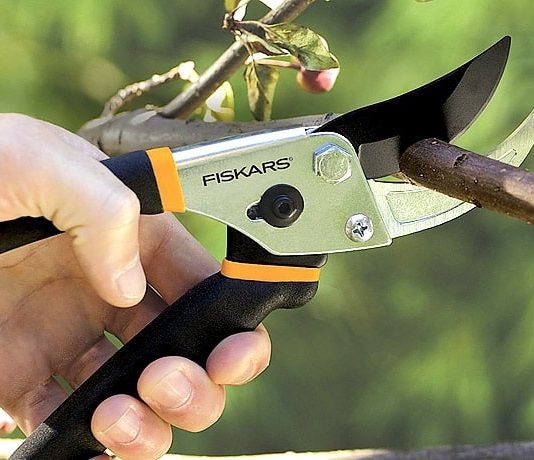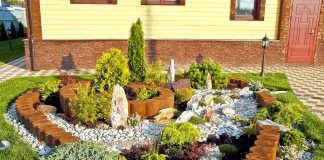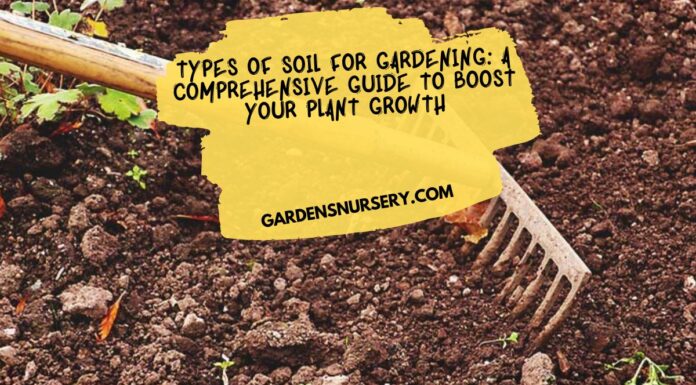GARDENS NURSERY | Gardening Tips, Landscaping, Lawncare
Gardens Nursery Advice is the site that brings you a wealth of information about landscaping your garden, with handy hints and top garden tips
Organic Turf Management Areas
Organic Turf Management Areas: Promoting Sustainable and Healthy Landscapes
Organic turf management is gaining popularity as more people prioritize environmentally friendly practices in landscaping and lawn care. Organic turf management...
How To Perfectly Prepare Your Outdoor Space For Enjoyable Summer Nights
When the temperature rises to an acceptable T-shirt and jeans level, it’s time to get ready for summer. Summer is a festive time perfect for spending time outdoors with...
Growing Lettuce in your Garden
Growing Lettuce in your Garden
Lettuce is one of the most popular vegetables in culinary arts and is used in salads and several other dishes. Hence, wouldn’t it be great...
How to Build Raised Garden Beds for Vegetables
Steps For Building A Raised Bed Garden
Raised bed gardens offer the home gardener an opportunity to grow plants they might not otherwise be able to because of soil or...
Flowers And Plants
Grass and Lawn
Mushrooms
Landscapig
How to Build a Rockery in your Home Garden
How to Build a Rockery in your Home Garden
Wildlife love discovering new places to hide and set up houses and a rockery is to...
How to Sell a House with a Bad Yard: Grab the...
How to Sell a House with a Bad Yard: Grab the Garden Gloves and Get to Work
An unkempt yard isn’t just an eye-sore, it's...
Top 5 Ways to Create an Incredibly Beautiful Patio
Top 5 Ways to Create an Incredibly Beautiful Patio
A patio is a great feature in any home. This outdoor space offers a space for...
11 Tips for Creating a Stunning Aesthetic Garden Landscape
11 Tips for Creating a Stunning Aesthetic Garden Landscape
Landscaping can change any outdoor space into a beautiful haven. It elevates the beauty of any...
How to Landscape for Curb Appeal
How to Landscape for Curb Appeal: A Guide to Boosting Your Home's Exterior
When it comes to improving the look and feel of your home,...
Ultimate Guide for the First-Time Homebuyer’s Lawn and Garden Maintenance
Ultimate Guide for the First-Time Homebuyer's Lawn and Garden Maintenance
Owning a home can be one of the most exciting and fulfilling experiences. But it...
Best 12 Plants Perfect For Any Landscape Design
"Landscape Design" is very crucial if you’re one with nature, and need to focus on enjoying the view of plants, flowers, trees, and shrubs....
Gardening Guide On Xeriscape and Xeriscaping
What is Xeriscaping
Xeriscaping is the procedure of creating a landscape with very little water. Several techniques are necessary for this process. Selecting appropriate plants,...
How Can Good Landscaping Increase The Value Of Your Home
A well-landscaped yard can be a home's best friend. Not only does it increase curb appeal, but it also adds value to the property...
Best Natural Fertilizer for Houseplants
Best Natural Fertilizer for Houseplants
Natural Fertilizer for Houseplants, Dear home gardeners, you no doubt ask every day about how to care for your plants, and what is the fertilizer...
Unlocking the Potential of Blood Meal Fertilizer
Unlocking the Potential of Blood Meal Fertilizer: A Comprehensive Guide
In the ever-evolving realm of gardening and agriculture, maximizing the potential of your fertilizers is paramount. Among the myriad options...
Vermiculite vs Perlite: Choosing the Right Soil Amendment
Vermiculite vs Perlite: Choosing the Right Soil Amendment
Gardening enthusiasts often face the dilemma of choosing the right soil amendment to optimize plant growth. Two commonly used options are vermiculite...
Top 17 Essential Plant Nutrients for Plant Growth
Top 17 Essential Plant Nutrients for Plant Growth
Let us go back to the basics and learn chemistry that would be extremely helpful in understanding its applications in gardening. Chemical elements...
LATEST ARTICLES
Best Electric Hedge Trimmers – Buying Guide
Best Electric Hedge Trimmers - Buying Guide
You can go through some of the best hedge trimmers as highlighted below. You will be in a position to understand what features...
Top 26 Ideas Gifts For Gardeners Who Want to Have Everything
Are you seeking the perfect gift for the green-thumbed gardener in your life? Whether they're a seasoned horticulturist or a budding plant enthusiast, finding the ideal present can be...
Choosing the Right Garden Tools (Top 14 Gardening Tools Names)
Choosing the Best Garden Tools and Knowing the Right Gardening Tools Names
Do you have the right garden tools for your yard? You don't need fancy tools to grow a...
Best Lawn Fertilizer Spreaders Reviews
Best Lawn Fertilizer Spreaders Reviews
Maintaining a healthy lawn requires the right combination of nutrients, including fertilizer. A lawn fertilizer spreader can help you evenly distribute fertilizer across your lawn,...
Best Lawn Seed Reviews – Buying Guide
Most people do not use the right products to get the grass green and keep it that way throughout the season. It is important to have the very best...
Top Low-maintenance Indoor Plants That You Can Have In Your Office
Top Low-maintenance Indoor Plants That You Can Have In Your Office
Having indoor plants in your office can have a major impact on air quality. Depending on the space you...
How to Choose a LawnMower?
How to Choose a Lawn Mower: The Ultimate Guide for a Perfectly Manicured Lawn
Maintaining a well-manicured lawn is a point of pride for many homeowners. A crucial tool in...
07 Best Garden Sheds For Storage in Outdoor Space
Garden Sheds For Storage
If someone says, what will be the challenging aspect of gardening? We will say storage problems. It is difficult to find out the best garden sheds....
How to Get Rid of Ants in the Most Effective Way
The question of how to get rid of pests can seem a very urgent issue if you have got up in the morning to find hundreds of ants swarming...
Rare Indoor House Plants: Elevate Your Indoor Greenery Game
Rare Indoor House Plants: Elevate Your Indoor Greenery Game
In the realm of indoor greenery, rare indoor house plants stand as exquisite gems, adding a touch of uniqueness and sophistication...
Exploring Washing Machine Drain Options: A Comprehensive Guide
Exploring Washing Machine Drain Options: A Comprehensive Guide
When it comes to maintaining your washing machine, ensuring proper drainage is paramount. A well-functioning drainage system not only prevents water damage...
Coarse Vermiculite 4 Cubic Foot Bag Review
Unveiling the Superiority of Horticultural Coarse Vermiculite: A 4 Cubic Foot Bag Review
In gardening and horticulture, coarse vermiculite stands as a staple, revered for its myriad benefits and versatile...
Can You Eat Raw Mushrooms? A Comprehensive Guide
Can You Eat Raw Mushrooms? A Comprehensive Guide
For mushrooms, people in the culinary world have differing opinions. Some people adore their earthy flavor and meaty texture, while others approach...
Do-It-Yourself Pest Control
Do-It-Yourself Pest Control: A Scientific Approach to Keeping Your Home Pest-Free
The Science of Pest Control
Keeping your home pest-free can seem like a daunting task, especially with the myriad of...
SCALE YOUR TEAM EFFECTIVELY: HERE IS WHY YOU SHOULD CONSIDER COLLABORATING WITH A STAFFING...
SCALE YOUR TEAM EFFECTIVELY: HERE IS WHY YOU SHOULD CONSIDER COLLABORATING WITH A STAFFING AGENCY
Employers lacking the time, knowledge, or resources to handle their hiring procedures entrust their recruitment...




























































